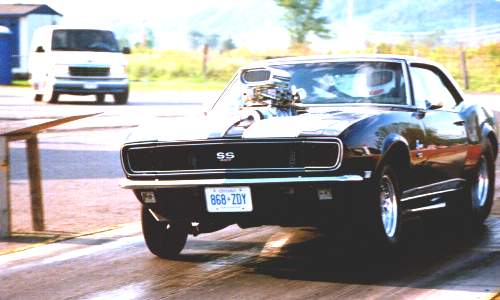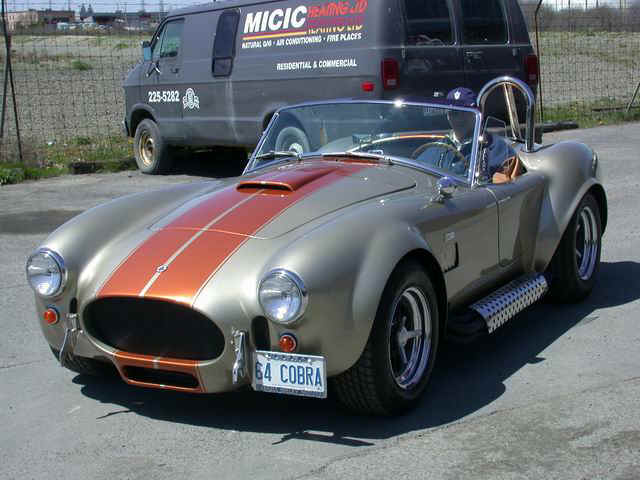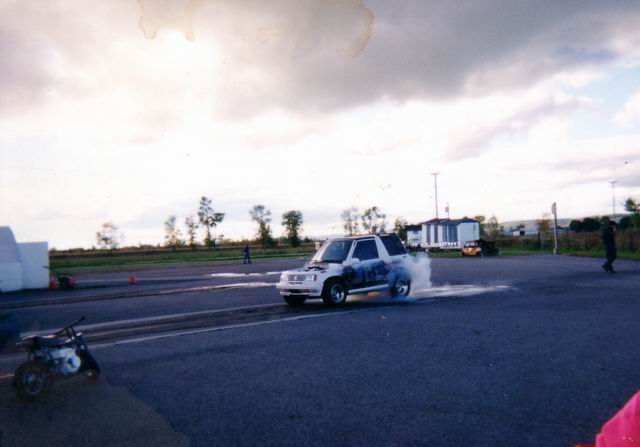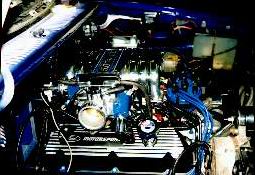"The AUTOMOTIVE Page"

This was the most challenging project I've ever undertaken. The goal with this project was to build a pro-street supercharged 1968 Camaro with all the correct badging, stripping, colors and emblems to that year. The hard part was this car had to make 900 plus horsepower and be a daily street driveable car. It had to perform as well as any race car on the race track. The goal was to run 9 seconds with no nitrous and 8 seconds with nitrous in the quarter mile and take first place in car shows.
For this project, I chose a big block Chevrolet engine with a supercharger. It's easy to make big power with superchargers because supercharged engines operate on low compression and don't need radical camshafts. Superchargers work on volume metric efficiency - the more air and fuel you can pump into the engine, the more power the engine makes. The downside to making this much power is you have to drive the supercharger hard. So, correct tuning is very critical when you run superchargers on the ragged edge. Once you find the sweet spot, they will virtually run forever.
The next goal was how do we get that much power to the ground without damaging the car and risking serious injury/death. Because this is a street car, we can't do a full race chassis on the street, so back half chassis was the way to go. The back half of the car consists of a full race four-link suspension with an after-market Ford 9" housing with a pro-centre section and gears fully adjustable aluminium coil over shocks. This setup adapts well to street use. The rear frame section is all constructed from mild steel tubing and ties into the front sub-frame. For added strength and safety, a full 12 point NHRA/IHRA legal roll cage was constructed and welded directly to the frame points to prevent twisting. The roll cage is heavily reinforced directly over the driver area in the event of a racing accident involving a roll-over. Kirky racing seats with 5 point harnesses were added to protect the driver. The front sub-frame was reinforced to handle high horsepower loads. We added a T6061 aluminium motor plates to keep the frame from twisting and damaging the car.
After the car was completed, one year and two months later, it was time to test. The first session was just short bursts down the drag strip to make sure the car would handle correctly. It's a good thing we decided not to use full power just yet because the car experienced some suspension problems. The first problem was I came off the trans brake at 4,000 rpm instead of 5,500 rpm and the car darted hard right for the guard rail. The problem was we had too much preload in the left side four link bar. After correcting that the car went straighter so we decided it was time to do a full pass. After shifting into high gear, the transmission exploded all over the race track, locking up the rear tires and dumping transmission fluid all over the headers and the car catching on fire. Thank God I managed to get the car stopped without any serious damage to the car and myself. Good thing I remembered to put the fire extinguisher in. We later found out the transmission builder couldn't build the transmission to handle that much horsepower and torque. We ordered a full competition transmission from Coan Engineering and that transmission has been in the car ever since. We also added a data logging computer to the car which monitors all the engine and suspension functions. We felt that we needed more information from the car if we were ever to reach the car's intended potential - and we did. The fastest this car's gone to date is 9.60 with no nitrous and 8.80 with nitrous. We can call this a project success and yes, it's very street driveable.
The car was entered in the 2000 Autorama Car Show and won seven awards including "Best of show". Here are some pictures:

This gem of a car is owned by Roger Delasrobil of Kanata, Ontario. When I owned my shop he was a district representative for car audio products. He used to come in from time to time to observe the 68 Camaro build up. Years after, he purchased this 1964 AC Cobra Replica. The car looked great from the outside but was plagued with some major problems. This project was an attempt by somebody who bought the kit and attempted to build it in his own garage. When I drove the car for the first time, I realized there was major problems with the engine overheating, lack of power, poor throttle control and so on. Roger employed us to redo the car so it is fun and safe to drive. One of the big problems we found was the throttle had no mechanical feel to it. The problem here was that the gas pedal was designed to work with mechanical linkages instead of a cable and the throttle would only partially open. We completetely redid the engine with the correct heads, camshaft, carburetion and custom-made mechanical linkages. After getting the car running right and not overheating, we found this car had more than enough power. The next job was to tackle the steering, the brakes and suspension. In these pictures, you will see all the upgrades from day 1 to completion. This car is now a good solid daily driver and wins first place in Ford shows.

This project is kind of unusual because you don't see very many motor conversions done with these types of vehicles. One of my customers asked me if I could do it. After looking over the vehicle, doing some measurements, I said yes it can be done with extensive modifications. He told me he had the budget to do it so away we went. I'll the pictures speak for themselves.
This vehicle was originally a 1992 Suzuki Sidekick 4x4 with the factory 4cylinder. The goal was to transplant a small block Chevrolet 355 making 400 horsepower behind a GM TH700R4 transmission and Ford 9 inch rear end custom cut to fit the chassis. One of the big challenges was sectioning the firewall to accommodate the extra length of a V8. The customer also wanted no wires showing. To do that, we had to hide wires behind the frame rails and behind the fenders.
This vehicle can be a daily driver and has won numerous awards in the special interests categories at car shows. The performance of this vehicle is amazing. It runs 12.70 quarter mile time at the drag strip and just a blast to drive. It is known as the Dracula Mobile. Owner Joe Correia.

This was one of the projects I always wanted to do. A small block Ford in a Ford Ranger. The project goal was to transplant the 302 from a 1989 5L Mustang along with the T5 5speed transmission. The great thing about this project, the customer wanted to keep it EFI instead of carburetor. Because this vehicle originally had a 4cylinder engine and was not EFI, we had to do some major wiring to make this engine run in this vehicle. The engine only has mild modifications and polishing and paint matching but other than that its pretty much stock with plenty of power for a vehicle that light. The project took six months to complete and was a success. Just a blast to drive! Owner Shawn - Dashworks.
This is our shop pet project. It is only built for all out quarter mile drag racing. The car is a 1987 Dodge Charger body sitting on top of an Alston Avenger tube chassis. With the car only weighing in at 2,000 lbs, it does not require as much horsepower to go as fast as the 68 Camaro project car. The engine is a 60 overboard 340 single four barrel carbureted engine that develops 500 plus horsepower. The fastest this car has ever run is 9.48 and 148 mph in a quarter mile. The great thing about this car is how easy it is to drive because of the superior chassis and suspension. This car competes at local drag strips in Ontario in the super pro super gas classes.
We are also happy we have finally landed a major sponsor for the 2004 season and here are some before and after pictures.
To be completed.